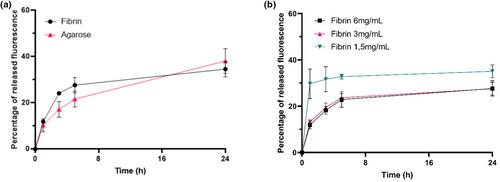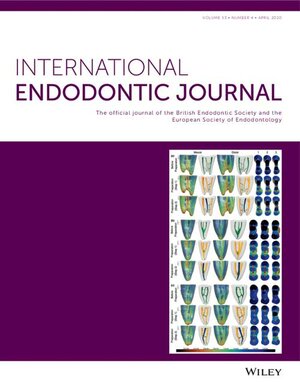Investigation of the early apical release from endodontic hydrogels: A 3D printed model
Abstract
Aim
Regenerative Endodontic Procedures (REPs) using new materials such as hydrogels aim to replace current endodontic treatments, but numerous limitations are to overcome. Apical release was little explored in previous studies, especially regarding hydrogels that incorporate molecules, such as growth factors and antibiotics. Apical release is a key mechanism in achieving regeneration, as it could regulate disinfection or cell colonization. Few models exist for apical release, limiting the transfer of these devices from bench to bedside. This study aims to design a simple and standardized model to identify parameters that influence the early apical release kinetic of molecules from endodontic hydrogels.
Methodology
Endodontic Release Inserts (ERI) were designed to mimic the situation of an immature incisor using three different diameters (Ø 0.5 to 2 mm) and to allow the study of the early release from a hydrogel in a 96-well plate. ERI was produced with a 3D printing machine. The kinetic release was investigated using 2 fluorescent, hydrophobic (BDP-500) and hydrophilic (Fluorescein) molecules, in different hydrogels (fibrin and agarose) and in various media (PBS or serum). The release kinetics were estimated by measuring the fluorescence at different time points (1 to 24 h).
Results
ERI use made it possible to report that apical diameters increase from 500 to 1000 μm was associated with an increase in release from 4.02 ± 1.63% to 11.53 ± 2.38% over 24 h. It also allowed us to report that bottom solution composition change from PBS to human serum was associated with an increase in the release of fatty acid molecules, whilst a decrease in the hydrogel concentration was associated with a variation in release kinetics. Moreover, nano-encapsulation of a molecule was associated with a decreased release over the first 24 h from 5.25 to 0%.
Conclusion
ERI use enables investigation of the parameters influencing release kinetics from endodontic hydrogels. Further investigations are necessary to evaluate the interaction of these parameters with each other, in animal models and clinic.


 求助内容:
求助内容: 应助结果提醒方式:
应助结果提醒方式:


